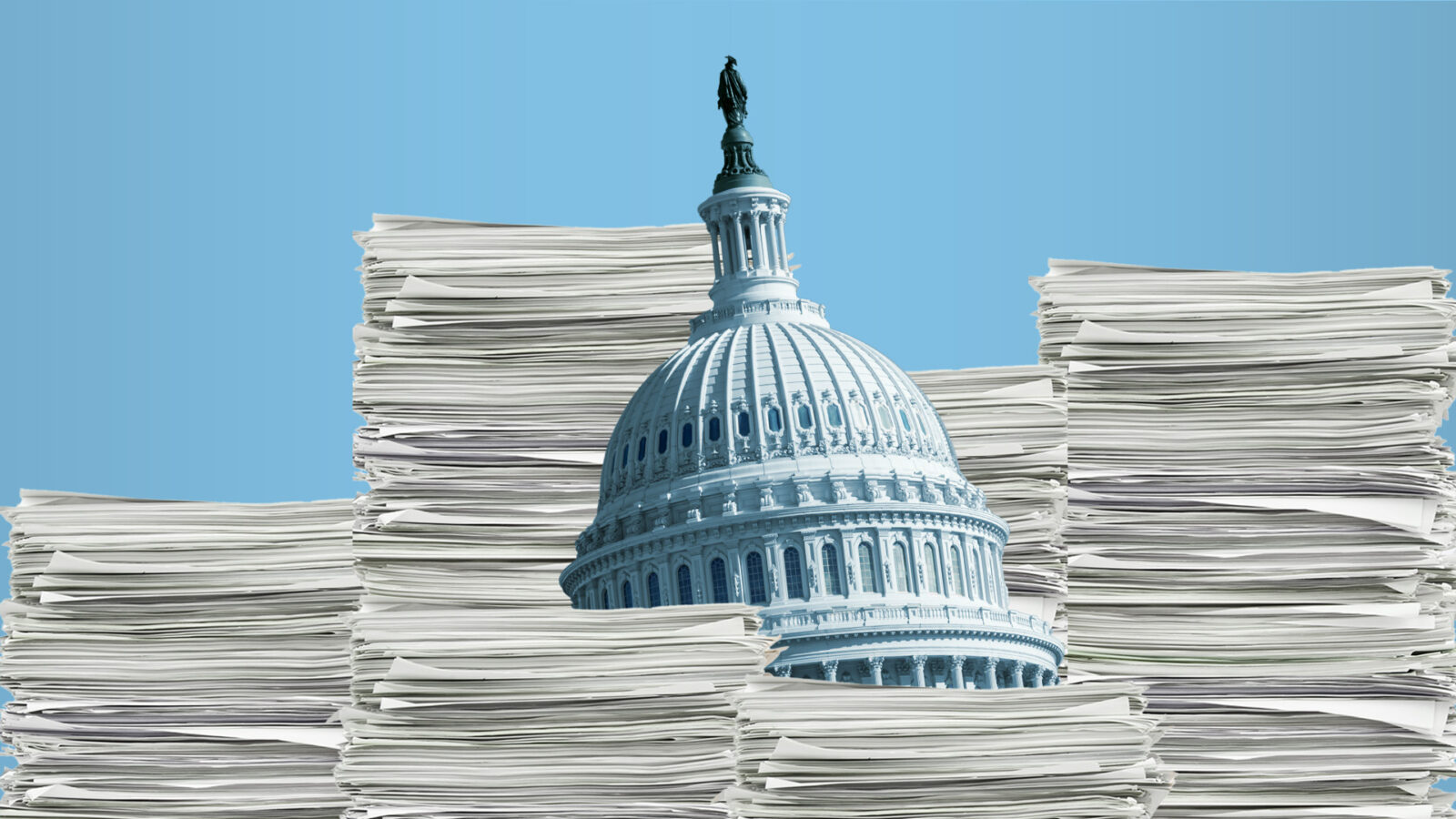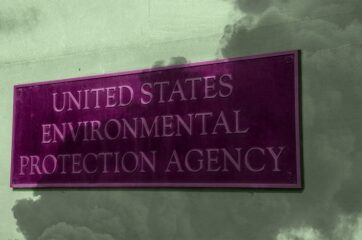With the enactment of the reconciliation legislation in early July, U.S. energy and climate policy has taken one of the sharpest regressive turns in history, sending shock waves through the clean energy market and threatening to raise energy costs and weaken the job market. As states weigh the impact of recent policy reversals, the focus shifts to a critical question: How can proactive state policies benefit specific economic sectors, industries, and communities and mitigate some of the harm from the so-called “One Big Beautiful Bill”? No state actions can completely make up for the consequences of this legislation, but states have a critical role in shaping the path forward, scaling what progress we can, and setting the roadmap for forward-looking climate policy.
This memo outlines the impacts of the budget reconciliation law on climate and clean energy and provides recommendations on how states can step in and help fill the gaps.
Phasing Out Technology Neutral Tax Credits (PTC and ITC)
What the reconciliation package did:
The Production Tax Credit (PTC) and Investment Tax Credit (ITC) for wind and solar technologies will be phased out for wind and solar projects that do not commence construction by July 4, 2026, unless projects that start later are able to be placed into service by the end of 2027. Foreign Entity of Concern conditions go into effect over incentives for all projects commencing construction after December 31, 2025.
What states can do:
- Beat the phaseout deadlines where possible. To help public agencies make the most of these tax credits, several practical guides from Evergreen, S2 Strategies, Lawyers for Good Government, Deloitte, and RMI highlight best practices that states might adopt to help secure federal incentives swiftly.
- Address looming energy affordability concerns. Modeling suggests that repeal of the ITC and PTC for wind and solar, which represented over 80 percent of new grid capacity in 2024, could increase household energy prices between 5 percent and 10 percent nationally, depending on the time frame, while specific states may see substantially higher increases. Rates may rise as much as 30 percent in some states, while adding as much as $500 per year to household utility costs. Notably, much of that modeled increase is due to weakened energy investment being unable to keep pace with projected data center demand. States have a variety of tools at their disposal to control rising energy costs for different classes of ratepayers, particularly in the emerging field of data center regulation. As states balance inevitably rising energy costs with skyrocketing demand, they should look to first-mover jurisdictions preventing data centers from passing increased grid costs on to ratepayers (see 2025 bills including Oregon’s HB 3546, Georgia’s SB 34, Idaho’s H 395, Virginia’s HB 2084, Montana’s HJ 46, and New Jersey’s A.5466). These states are working to make the source of the load growth pay the real cost of added system capacity, particularly at a time when that capacity is becoming increasingly costly.
- Require additional green energy procurement for data centers. This could include requiring 100 percent renewable energy procurement by targeted dates or prohibiting incentives for fossil fuel power purchase agreements (see: New York S.6394). States could also provide tax credits to data centers that use carbon-free energy and use batteries, instead of diesel fuel, as a backup power source (see: California SB58).
- Add technology-specific support for wind and solar. Since the reconciliation bill specifically targets wind and solar incentives, while allowing batteries, nuclear, carbon capture, and other technologies to receive credits through 2034 (pending FEOC compliance), states with technology-neutral renewable energy policies should consider adopting specific wind and solar carve-outs. A separate tier of renewable energy certificates (RECs) for these technologies might present the necessary incentive to support continued market development.
- Enact comprehensive siting reform to promote increased economic development through more rapid deployment of clean energy. A growing number of states have enacted siting legislation, including New York, California, Minnesota, and Michigan (Pennsylvania is also currently considering a proposed RESET board from Governor Shapiro), with the goal of streamlining a centralized state permitting process for renewables, batteries, and transmission that can preempt overburdensome local procedures. Other emerging siting approaches include agencies proactively identifying Build Ready sites, including at brownfields (see examples from New York and Massachusetts), or utilizing existing rights of way, such as highways, to expedite the siting of transmission.
- Proactively address grid reliability at the public utilities commissions/public service commissions (PUC/PSC). Cuts to federal credits have been projected to cause grid reliability issues, as more than half of new energy capacity over the next ten years may now be terminated. States have a variety of tools to ensure that PUCs are empowered to proactively consider grid reliability issues in the face of rising demand, clean energy targets, and uncertain capacity. States can update PUC statutory mandates to allow them to consider clean energy goals, align Integrated Resource Planning processes with energy transition projections, embrace innovative ways of managing power demand, like virtual power plants, and study the impacts of load growth on energy capacity and transmission constraints. Ultimately, state regulators and policymakers have broad authority over their electric capacity and load growth—now it is all the more urgent that they exercise it.
Accelerating Fossil Fuel Development on Federal Lands
What the reconciliation package did:
The reconciliation package included a number of measures to spur fossil fuel development on federal lands, including removing agency discretion to deny federal leases based on environmental, private land, or community concerns, and lowering the royalty rates on oil leases while eliminating them from gas leases altogether.
What states can do:
While states cannot preempt the federal government from issuing leases for oil and gas extraction on federal lands, they can increase the costs of extraction, while helping fill state coffers. States can impose higher severance taxes to compensate for decreased federal royalty rates, and can then use that money to fund clean energy. To be clear, states can impose these taxes in addition to whatever the federal lease terms are. CBPP and the Tax Policy Center have put forward leading resources on this subject. States can also, of course, increase royalty rates for fossil fuel production on state lands, and the resulting revenue can be allocated to clean energy and climate initiatives.
Repeal of Electric Vehicle (EV)-Related Tax Credits
What the reconciliation package did:
The megabill withdrew tax credits for purchasing new electric vehicles (up to $7,500) and used electric vehicles (up to $4,000), effective September 30, as well as for chargers and installation, effective June 30, 2026.
What states can do:
- Incentivize the same vehicles and chargers. A number of states already offer electric vehicle and charger rebates, and models exist to replicate these incentives either through state rebates or tax credits.
- Empower regulators to plan the charging network. State regulators, particularly at the Public Service Commission, have an indispensable role in leveraging utility regulation to ensure the thoughtful buildout of statewide electric vehicle charging networks, which may be a bigger hurdle to EV adoption than the up-front cost of the vehicles.
- Lead the way through public procurement. State governments can lead the way by setting ambitious public EV fleet and bus procurement targets.
- Encourage electric fleets through indirect source review. Where states cannot directly require private vehicle fleets to electrify, they can nevertheless control permitting for centers of fleet traffic, like warehouses, through indirect source review. This may provide an opportunity to require lower-emission fleets.
- Lead on EV charging rate design, including bidirectional charging. The long-term affordability of EVs can be significantly impacted by EV charging rates. Several jurisdictions are ensuring that EV charging rates do not unfairly punish EVs, while fewer states have yet tackled how EVs can be used as a grid asset. Requiring bidirectional charging capabilities or rate design can improve the economics of both EV ownership and grid reliability.
- Establish Green Bank financing. Green banks can help support financing clean transportation and related infrastructure. A state or city can set up a green bank to directly fund and provide financing products for electric vehicle initiatives.
- Flex federal funds into building out EV infrastructure. Federal law permits states to flex funding allocated through certain programs funded by the Federal-Aid Highway Program to projects including electric vehicle charging infrastructure, sidewalks, protected bike lanes, and public transportation. Funds could also be transferred to build out public electric vehicle charging infrastructure on state rights-of-way, as well as electric bus charging networks.
Repeal of Financial Penalties for CAFE Violations
What the reconciliation package did:
By removing the financial penalty for violations of Corporate Average Fuel Economy (CAFE) standards, the reconciliation package undermined the bedrock of automotive fuel economy in the United States. Fines are the only mechanism the DOT has to hold automakers accountable to meet CAFE standards, so without them, there is no incentive for automakers to comply with them.
What states can do:
While states are preempted from regulating what comes out of the tailpipe, they can regulate what goes into the gas tank. States looking to reduce the greenhouse gas intensity of automotive fuels, even as fleet-wide fuel economy backslides, may look at Clean Fuels or Low Carbon Fuel Standards. While the history of Clean Fuels Standards is flawed, there are emerging tools and best practices to help states design programs that work.
Termination of Environmental Justice Block Grants
What the reconciliation package did:
The bill rescinded the Environmental and Climate Justice (ECJ) Block Grants, which provided funding for pollution mitigation, climate resilience, and community engagement directly to nonprofit organizations serving EJ communities. Much of these funds were unobligated.
What states can do:
As the federal government walks back this and several other initiatives aimed at advancing environmental justice, states must fill the gap. Administratively, they can achieve this by defining and mapping EJ communities, and forming governmental EJ staff positions and advisory bodies to center their voices. From the perspective of replacing lost funding, they can adopt EJ Community Investment Requirements, which require a certain percentage of funds and/or benefits from state climate and clean energy investments to be allocated to EJ communities.
Termination of Methane Emissions Reduction Program for Oil and Gas Production
What the reconciliation package did:
The reconciliation package terminated outstanding funding for financial and technical assistance to support reporting, monitoring, and implementing solutions to reduce methane emissions at oil and gas production sites, while delaying a major fee on oil and gas sector methane emissions until 2034. This comes at the same time as EPA is reconsidering its 2024 rule on methane emissions from oil and gas production.
What states can do:
States are not preempted from directly regulating oil and gas production facilities to eliminate the flaring of methane and minimize leaks from processes, equipment, and pipelines, as well as mandating emissions reporting and regular monitoring. Several states are already leading the way.
Termination of Home Efficiency Incentives
What the reconciliation package did:
The reconciliation package eliminated tax credits of 30 percent off (up to $2,000) for installing a heat pump or heat pump water heater, plus $1,200 for weatherization and insulation, effective at the end of 2025, while also terminating incentives to builders of homes that meet Energy Star or Zero-Energy Ready Home standards, effective June 30, 2026.
What states can do:
Dozens of examples of states supporting heat pumps or geothermal energy exist including utility rebates, personal tax credits, property tax incentives, loan programs, and other means. And where the federal government can only offer incentives for efficient buildings, states can actually require them, whether by setting building performance standards, phasing out gas appliances, requiring LEED certification, tightening building codes, adopting Clean Heat Standards, increasing the ambition of Energy Efficiency Resource Standards, and more.
The Role of States in Climate Policy
It’s abundantly clear that the reconciliation legislation signed by President Trump is harmful for our climate, clean energy, and communities. It is now critical that states take advantage of all possible policy levers to both mitigate harm and serve their residents.
Since reconciliation bills are reserved for budgetary matters, most of the policy changes outlined above might theoretically be counteracted via the power of the purse. While states have a key role to play, we acknowledge that state budgets are not infinitely expandable to account for irresponsible federal policy. On top of the climate and clean energy provisions, the health care and food assistance provisions of the law will have significant negative budgetary impacts for states as they grapple with massive cuts to the safety net. As states rethink hard choices about how to fund their clean energy initiatives, the Center on Budget and Policy Priorities’ (CBPP) tracker of State and Local Revenue Options provides them with a useful tool to target revenues in order to expand their financial capacity to pursue the clean energy transition.
Regardless of federal policy, we affirm that states always have abundant authority to drive the energy transition forward. As we have outlined above, states have the most jurisdiction over the vast breadth of sectors that need to decarbonize. They also have the closest ties to the communities and burgeoning industries that are endangered by this federal shift, and a responsibility to act. In many ways, the shadow of this reconciliation bill now marks the path that states will have to walk in the months and years ahead as they seek to maintain our climate progress and secure a liveable future for their communities.











